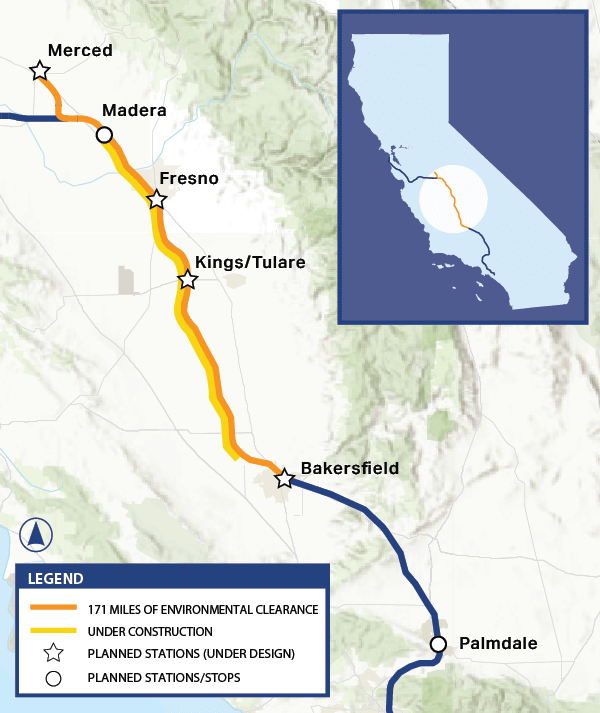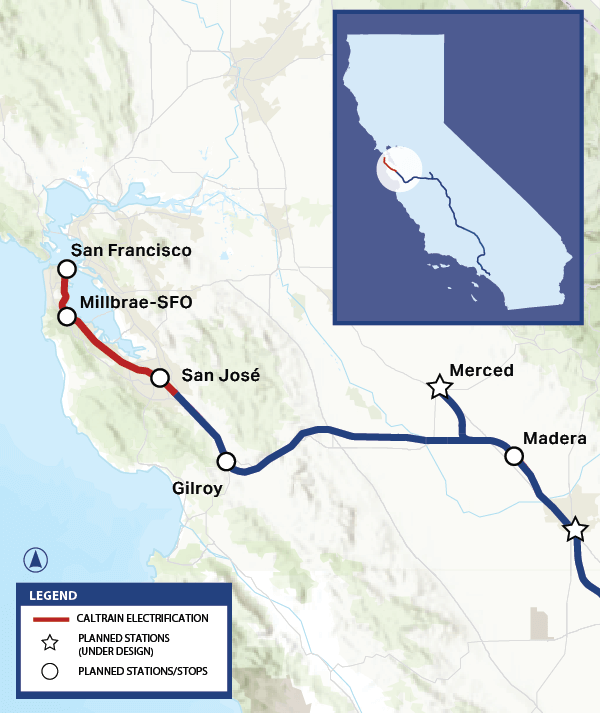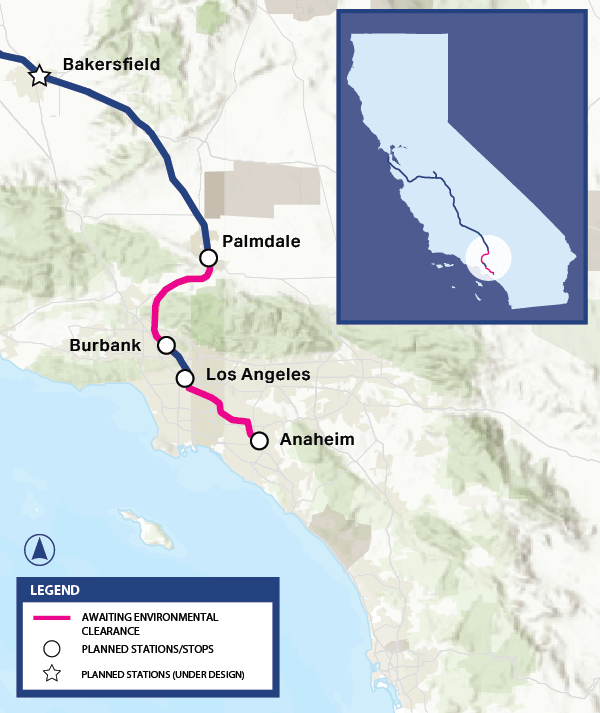Highlights from Chapter 2:
Connecting the Regions
While construction and early operations primarily focus on the Central Valley, the success of the larger 494-mile statewide project relies on the progress made developing the project in three distinct and connected regions — Central Valley (171 miles), Northern California (159 miles), and Southern California (164 miles).
In the Central Valley, we have made numerous advancements since the 2023 PUR, including:
- Resolution of all major commercial issues, resulting in a complete project definition and scope.
- Completion of 17 structures among the three active construction segments.
- Improved right-of-way planning and management, resulting in exceeding delivery forecasts with 98 percent of parcels delivered to the design-builder.
- Funding to support advanced design of the Merced and Bakersfield extensions and trainset procurement.
In Northern California, environmental clearance is complete, and the region is poised to use funding as it becomes available for advanced design. Work is underway on critical infrastructure projects to integrate high-speed rail with existing transit networks.
- The Authority has contributed more than $700 million toward the Caltrain electrification project. Caltrain is currently testing its electric trains in anticipation of starting electrified service along its 51-mile corridor in 2024.
- The Authority, the City of San José, and the other partners are working on a Diridon Station plan to accommodate increased service from high-speed rail, Bay Area Rapid Transit (BART), Caltrain, and the other transit providers that serve the station.
- Grade separation projects — roadways that realign traffic over or under a railway to eliminate hazards — are progressing.
In Southern California, the Authority continues to work with regional rail and transit partners in preparation for high-speed rail operations.
- Environmental progress continues, with 56 percent already cleared and the 41-mile Palmdale to Burbank section anticipated to come before the Board for approval in the second quarter of 2024.
- LA Metro’s LA Metro’s Rosecrans Avenue and Marquardt Avenue grade separation project is already improving road safety and efficiency. The Santa Fe Springs project was funded in part with more than $76 million from the Authority. The bridge portion of the project opened for vehicle and pedestrian traffic in January 2024.
Central California

Northern California

Southern California


